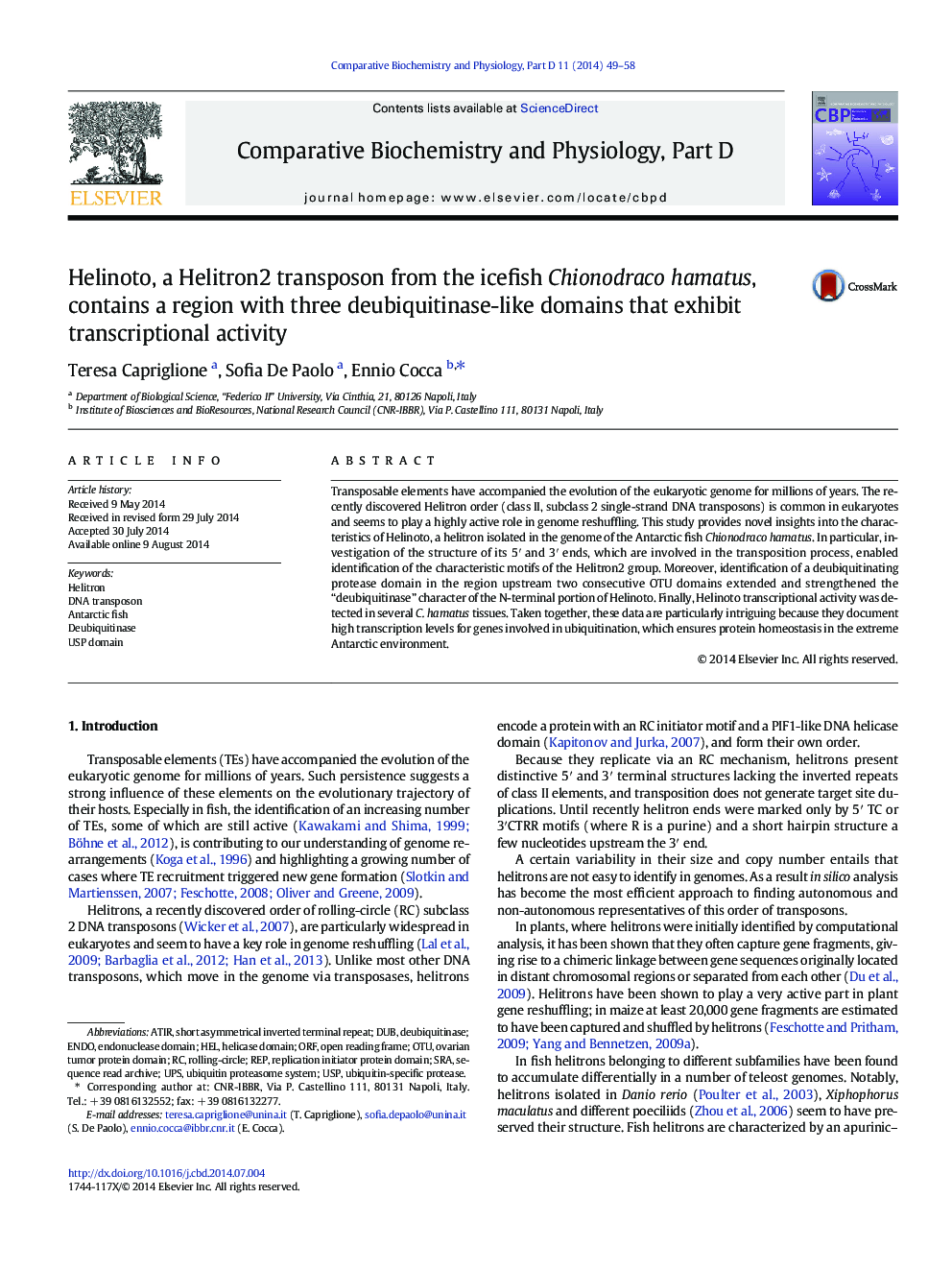| Article ID | Journal | Published Year | Pages | File Type |
|---|---|---|---|---|
| 1978475 | Comparative Biochemistry and Physiology Part D: Genomics and Proteomics | 2014 | 10 Pages |
Transposable elements have accompanied the evolution of the eukaryotic genome for millions of years. The recently discovered Helitron order (class II, subclass 2 single-strand DNA transposons) is common in eukaryotes and seems to play a highly active role in genome reshuffling. This study provides novel insights into the characteristics of Helinoto, a helitron isolated in the genome of the Antarctic fish Chionodraco hamatus. In particular, investigation of the structure of its 5′ and 3′ ends, which are involved in the transposition process, enabled identification of the characteristic motifs of the Helitron2 group. Moreover, identification of a deubiquitinating protease domain in the region upstream two consecutive OTU domains extended and strengthened the “deubiquitinase” character of the N-terminal portion of Helinoto. Finally, Helinoto transcriptional activity was detected in several C. hamatus tissues. Taken together, these data are particularly intriguing because they document high transcription levels for genes involved in ubiquitination, which ensures protein homeostasis in the extreme Antarctic environment.
